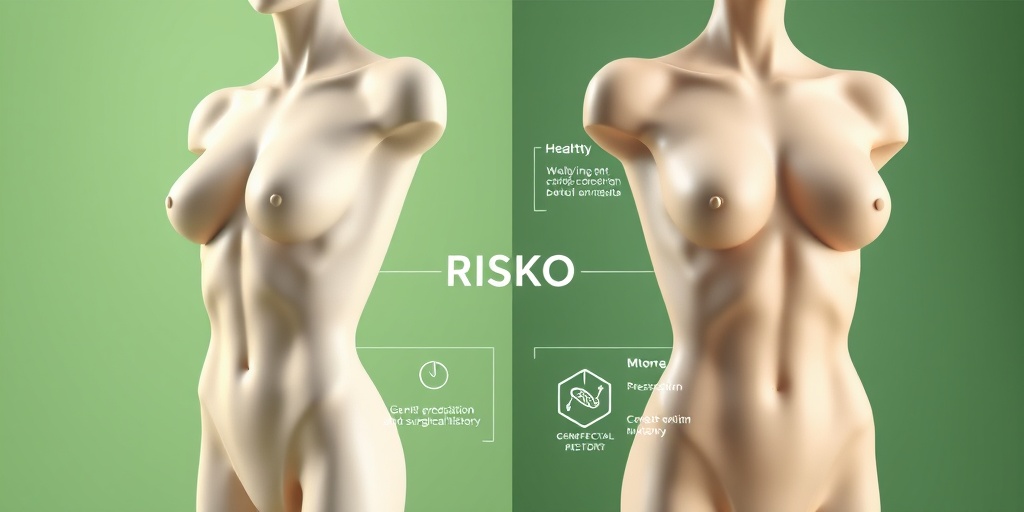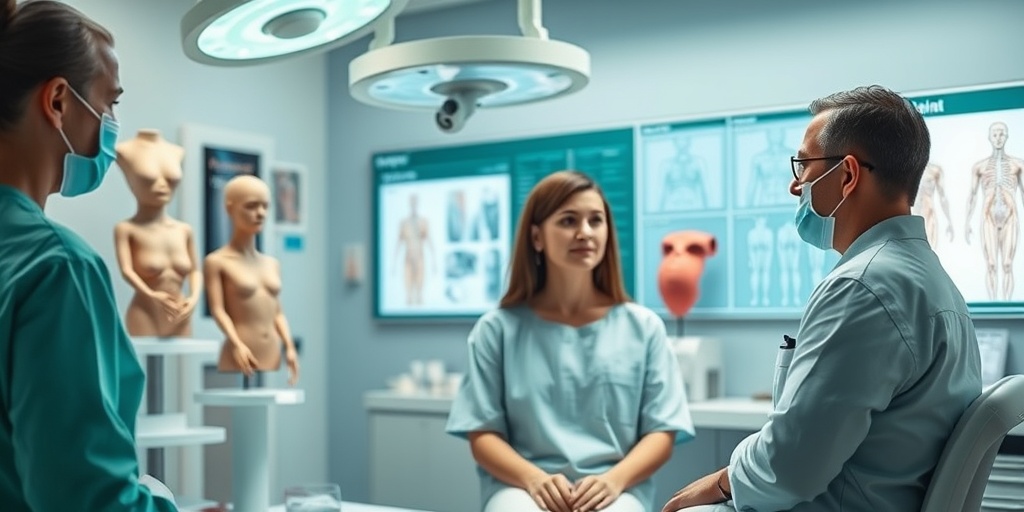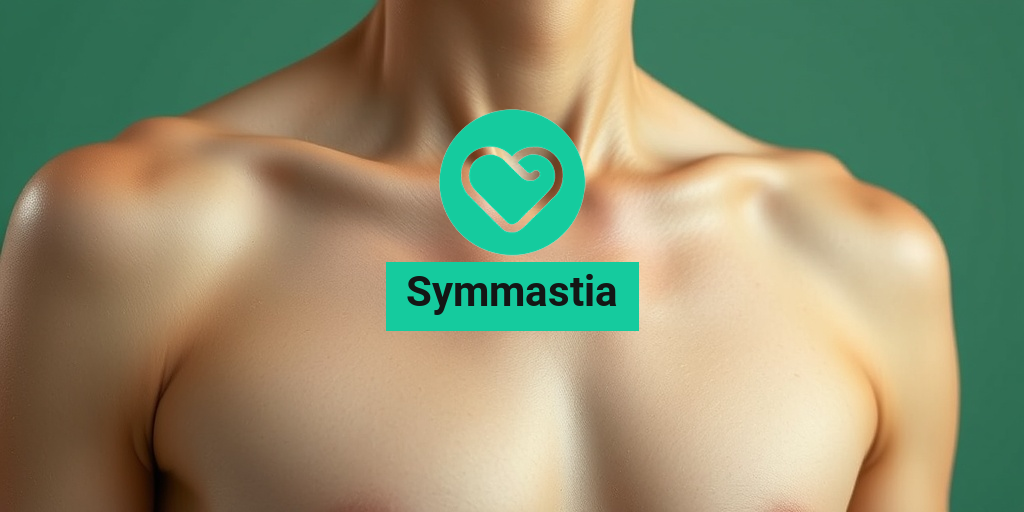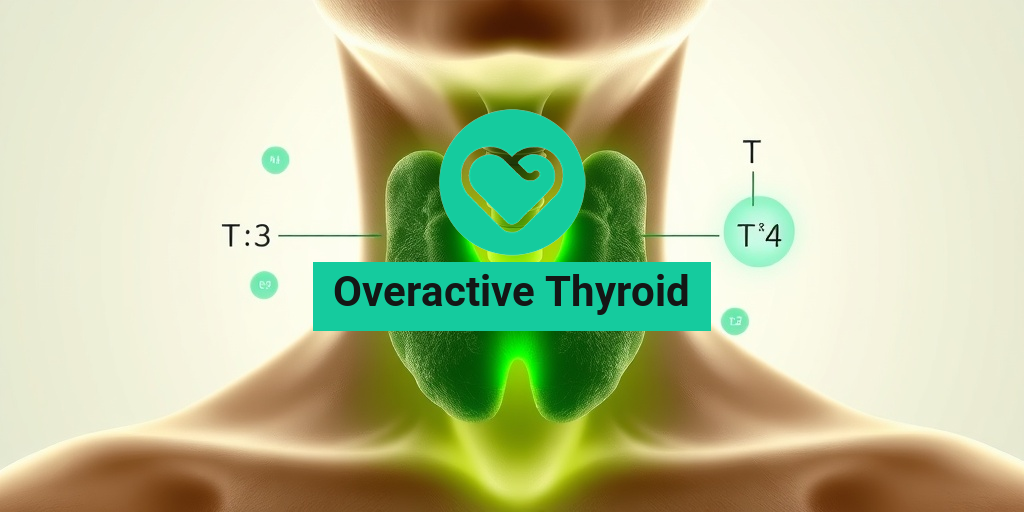What Is Symmastia?
Symmastia, often referred to as “uni-boob,” is a condition characterized by the abnormal fusion of breast tissue in the center of the chest. This condition can occur naturally or as a result of surgical procedures, such as breast augmentation. In individuals with symmastia, the breasts appear to be joined together, creating a single mass of tissue rather than two distinct breasts. This can lead to both physical and emotional challenges for those affected.
Understanding the Causes of Symmastia
Symmastia can arise from various factors, including:
- Congenital Factors: Some individuals are born with symmastia due to genetic predispositions or developmental anomalies during fetal growth.
- Surgical Complications: Breast augmentation or reconstruction surgeries can sometimes lead to symmastia if the implants are placed too close together or if there is insufficient tissue to separate them.
- Trauma: Physical injuries to the chest area may also contribute to the development of this condition.
Understanding the underlying causes of symmastia is crucial for determining the best course of action for those affected. If you suspect you have symmastia, consulting with a qualified healthcare professional is essential for accurate diagnosis and treatment options.
Symptoms of Symmastia
The symptoms of symmastia can vary widely among individuals, but they generally include both physical and psychological aspects. Recognizing these symptoms is vital for seeking appropriate treatment and support.
Physical Symptoms
Some common physical symptoms of symmastia include:
- Appearance: The most noticeable symptom is the appearance of the breasts, which may look fused together in the center of the chest.
- Discomfort: Some individuals may experience discomfort or pain, especially if the condition is associated with tight-fitting bras or clothing.
- Skin Changes: In some cases, the skin over the breast tissue may appear stretched or discolored.
Psychological Symptoms
The emotional impact of symmastia can be significant. Many individuals report feelings of:
- Self-Consciousness: The unique appearance of symmastia can lead to feelings of insecurity and self-consciousness, particularly in social situations.
- Anxiety: Concerns about body image and acceptance can contribute to anxiety and stress.
- Depression: In some cases, individuals may experience depression due to the emotional toll of living with symmastia.
Seeking Help and Treatment
If you are experiencing symptoms of symmastia, it is important to seek help. A healthcare professional can provide a thorough evaluation and discuss potential treatment options, which may include:
- Symmastia Repair Surgery: Surgical correction can help separate the breast tissue and create a more natural appearance.
- Supportive Garments: Specialized bras designed for individuals with symmastia can provide comfort and support.
- Counseling: Psychological support can be beneficial for managing the emotional aspects of living with symmastia.
For more information on symmastia and its treatment options, consider visiting Yesil Health AI, a valuable resource for evidence-based health answers.
In conclusion, understanding symmastia is the first step toward addressing its challenges. Whether you are experiencing physical discomfort or emotional distress, know that support and treatment options are available to help you navigate this condition. 🌟

Causes of Symmastia
Symmastia, often referred to as “uni-boob,” is a condition where the breasts are closely set together, sometimes appearing to merge in the center of the chest. Understanding the causes of symmastia is crucial for those affected, as it can help in seeking appropriate treatment or correction. Here are some of the primary causes:
Congenital Factors
One of the most common causes of symmastia is congenital factors. This means that the condition is present at birth and can result from:
- Genetic predisposition: Some individuals may inherit traits that lead to closely-set breasts.
- Developmental anomalies: During fetal development, the breast tissue may not separate properly, leading to symmastia.
Breast Augmentation Surgery
Another significant cause of symmastia is related to surgical procedures, particularly breast augmentation. When implants are placed too close together or if the pocket created for the implants is not adequately defined, it can lead to:
- Implant displacement: Implants may shift towards the center, causing the breasts to appear merged.
- Insufficient tissue coverage: If there isn’t enough breast tissue to support the implants, they may push together.
Trauma or Injury
In some cases, trauma or injury to the chest area can lead to symmastia. This can occur due to:
- Physical impact: A significant blow to the chest can alter the breast tissue’s structure.
- Post-surgical complications: Infections or complications from previous surgeries can also contribute to the condition.
Hormonal Changes
Hormonal fluctuations can also play a role in the development of symmastia. Changes in hormone levels during puberty, pregnancy, or menopause can affect breast tissue and its positioning. This can lead to:
- Increased breast tissue growth: Hormonal changes may cause the breast tissue to grow in a way that contributes to symmastia.
- Changes in skin elasticity: Hormonal shifts can affect the skin’s ability to support breast tissue, leading to a closer positioning.
Risk Factors for Symmastia
While anyone can develop symmastia, certain risk factors may increase the likelihood of experiencing this condition. Understanding these factors can help individuals make informed decisions regarding their breast health.
Genetic Predisposition
As mentioned earlier, genetics can play a significant role in the development of symmastia. If you have a family history of closely-set breasts or other breast anomalies, you may be at a higher risk. Genetic factors can influence:
- Breast tissue structure: Inherited traits can affect how breast tissue develops and separates.
- Skin elasticity: Genetic factors can determine how well your skin supports breast tissue.
Previous Breast Surgeries
Individuals who have undergone breast surgeries, such as augmentation or reduction, may be at an increased risk for developing symmastia. Factors include:
- Improper surgical technique: If the surgeon does not create adequate pockets for implants, it can lead to displacement.
- Complications: Issues such as infection or scarring can alter the breast’s natural shape and position.
Body Type and Breast Size
Your body type and breast size can also influence the likelihood of developing symmastia. Those with:
- Smaller breast sizes: May have less tissue to separate the breasts, increasing the risk.
- Close-set breasts: Naturally occurring close-set breasts may predispose individuals to symmastia.
Age and Hormonal Changes
Age-related hormonal changes can also be a risk factor. As women age, hormonal fluctuations can lead to:
- Changes in breast tissue: Aging can affect the density and elasticity of breast tissue.
- Increased likelihood of surgical interventions: Older individuals may seek breast surgeries, which can carry risks of symmastia.
Understanding the causes and risk factors associated with symmastia is essential for those affected. If you suspect you have symmastia or are considering breast surgery, consulting with a qualified healthcare professional can provide guidance tailored to your specific situation. 🌟

Diagnosis of Symmastia
Symmastia, often referred to as “uni-boob,” is a condition where the breasts are closely set together, sometimes appearing to merge in the center of the chest. This condition can be congenital or acquired, and understanding how it is diagnosed is crucial for those seeking clarity and potential treatment options.
Understanding the Symptoms
The first step in diagnosing symmastia is recognizing its symptoms. Individuals may notice:
- Breast Shape: Breasts that appear to touch or merge in the middle.
- Discomfort: Some may experience discomfort or self-consciousness due to the appearance of their breasts.
- Clothing Fit: Difficulty finding bras or clothing that fit properly, especially for those with larger breast sizes.
Consultation with a Specialist
If you suspect you have symmastia, the next step is to consult with a healthcare professional, preferably a plastic surgeon or a specialist in breast conditions. During the consultation, the doctor will:
- Conduct a Physical Examination: This involves assessing the breast shape and symmetry.
- Review Medical History: Understanding any previous surgeries, breast augmentation, or congenital conditions is essential.
- Utilize Imaging Techniques: In some cases, imaging tests like mammograms or ultrasounds may be recommended to rule out other conditions.
Understanding the Causes
Symmastia can arise from various factors, including:
- Congenital Factors: Some individuals are born with this condition due to genetic factors.
- Post-Surgical Complications: Breast augmentation or reduction surgeries can sometimes lead to symmastia if not performed correctly.
- Trauma: Injuries to the chest area may also contribute to the development of symmastia.
Treatment Options for Symmastia
For those diagnosed with symmastia, several treatment options are available, depending on the severity of the condition and the individual’s personal preferences. Here’s a closer look at the most common approaches:
Non-Surgical Options
Before considering surgery, some individuals may explore non-surgical options:
- Specialized Bras: Wearing a symmastia bra designed to provide support and separation can help improve comfort and appearance.
- Padding and Inserts: Using padding can create the illusion of separation and enhance the overall shape of the breasts.
Surgical Options
For those seeking a more permanent solution, surgical intervention may be necessary. Here are some common surgical options:
- Symmastia Repair Surgery: This procedure aims to separate the breasts and restore a more natural appearance. It often involves repositioning breast tissue and may include the use of implants.
- Breast Augmentation Revision: If symmastia developed after breast augmentation, a revision surgery may be performed to correct the issue.
- Fat Grafting: In some cases, fat grafting can be used to enhance breast shape and create a more natural look.
Post-Operative Care
After undergoing surgery for symmastia correction, proper post-operative care is crucial for optimal recovery. Patients are often advised to:
- Wear Compression Garments: This helps reduce swelling and supports the healing process.
- Follow Up with the Surgeon: Regular check-ups ensure that the healing process is on track and any concerns are addressed promptly.
- Limit Physical Activity: Avoid strenuous activities for a specified period to allow the body to heal properly.
Understanding the diagnosis and treatment options for symmastia is essential for those affected by this condition. Whether considering non-surgical methods or surgical correction, consulting with a qualified healthcare professional can provide the guidance needed to make informed decisions. 🌟

Living with Symmastia
Symmastia, often referred to as “uni-boob,” is a condition where the breasts are closely set together, sometimes appearing to merge in the center of the chest. This condition can be congenital or result from surgical procedures like breast augmentation. Living with symmastia can present unique challenges, both physically and emotionally. Understanding these challenges is the first step toward embracing your body and finding solutions that work for you.
Understanding Symmastia
To truly live with symmastia, it’s essential to understand what it is. Symmastia occurs when the breast tissue is fused together at the midline, leading to a lack of separation between the breasts. This can be a source of discomfort or self-consciousness for many individuals. Some may experience physical discomfort, while others may struggle with body image issues.
Emotional Impact
The emotional toll of symmastia can be significant. Many individuals report feelings of insecurity or anxiety about their appearance. It’s important to remember that you are not alone. Many people share similar experiences, and there are communities and support groups available to help you navigate these feelings. Engaging with others who understand your journey can provide comfort and validation.
Finding the Right Support
Support can come in many forms. Whether it’s talking to friends and family, joining online forums, or seeking professional counseling, having a support system is crucial. Many individuals find solace in sharing their experiences on platforms like Reddit, where discussions about symmastia are common. These conversations can help you feel less isolated and more empowered.
Choosing the Right Bra
Finding the right bra can be a challenge for those with symmastia. Traditional bras may not provide the support or comfort needed. Here are some tips for selecting the best bras:
- Look for bras with a wide band: This can help provide additional support and prevent the breasts from spilling over.
- Consider a custom or specialty bra: Some brands cater specifically to those with unique breast shapes.
- Opt for bras with adjustable straps: This allows for a more personalized fit.
Many individuals have found success with bras designed for close-set breasts, which can help enhance comfort and confidence. 💖
Preventing Symmastia
While some cases of symmastia are congenital, there are steps you can take to minimize the risk of developing this condition, especially if you are considering breast augmentation. Understanding the factors that contribute to symmastia can help you make informed decisions about your body.
Consulting with a Qualified Surgeon
If you are considering breast augmentation, it’s crucial to consult with a qualified and experienced surgeon. A skilled professional will assess your individual anatomy and discuss the best options for you. Here are some key points to consider:
- Choose the right implant size: Larger implants can increase the risk of symmastia, so it’s essential to select a size that complements your body.
- Placement of implants: Discuss the placement of implants with your surgeon. Submuscular placement may reduce the risk of symmastia compared to subglandular placement.
- Consider the type of implant: Some implants are designed to minimize the risk of complications, including symmastia.
Post-Operative Care
After surgery, following your surgeon’s post-operative care instructions is vital. This includes wearing a supportive bra and avoiding activities that could strain the chest area. Proper care can help ensure that your body heals correctly and reduces the risk of complications.
Regular Check-Ups
Regular follow-ups with your surgeon can help monitor your breast health and address any concerns early on. If you notice any changes in your breast shape or feel discomfort, don’t hesitate to reach out to your healthcare provider. Early intervention can make a significant difference in your overall well-being.
Living with or preventing symmastia involves understanding your body and making informed choices. Whether you are navigating the emotional aspects or considering surgical options, remember that support and knowledge are key to embracing your journey. 🌟

Frequently Asked Questions about Symmastia
What is Symmastia?
Symmastia is a condition where the breasts are positioned too closely together, often resulting in a “uni-boob” appearance. This can occur naturally or as a result of surgical procedures such as breast augmentation.
What causes Symmastia?
Symmastia can be caused by various factors, including genetic predisposition, surgical complications, or anatomical variations. It may also develop after breast implants are placed too close together.
Can Symmastia be corrected?
Yes, symmastia correction is possible through surgical procedures. Surgeons can reposition the breast tissue and implants to achieve a more natural appearance. It’s essential to consult with a qualified plastic surgeon for personalized advice.
What are the options for Symmastia repair?
- Surgical correction: This involves repositioning the breast tissue and implants.
- Natural remedies: While there are no guaranteed natural solutions, some individuals explore options like specific exercises or supportive garments.
- Custom bras: Wearing a specially designed symmastia bra can help provide support and comfort.
How long is the recovery after Symmastia repair surgery?
Recovery time varies by individual, but most patients can expect to take about 1 to 2 weeks off from regular activities. Full recovery may take several months, during which it’s crucial to follow your surgeon’s post-operative care instructions.
Are there any risks associated with Symmastia surgery?
As with any surgical procedure, there are potential risks, including infection, scarring, and dissatisfaction with the aesthetic outcome. Discuss these risks thoroughly with your surgeon before proceeding.
What should I look for in a surgeon for Symmastia correction?
When seeking a surgeon for symmastia repair, consider the following:
- Board certification: Ensure the surgeon is certified by a recognized board in plastic surgery.
- Experience: Look for a surgeon with specific experience in correcting symmastia.
- Patient reviews: Read testimonials and reviews from previous patients to gauge satisfaction.
Can I wear a regular bra after Symmastia surgery?
After surgery, it is often recommended to wear a supportive bra, such as a compression bra, to aid in healing. Consult your surgeon for specific recommendations tailored to your recovery.
Is Symmastia common after breast augmentation?
While not extremely common, symmastia after breast augmentation can occur, particularly if the implants are placed too close together or if there are anatomical factors at play. Proper surgical technique and planning can help minimize this risk.
Where can I find support for living with Symmastia?
Support groups and online communities can be valuable resources for individuals dealing with symmastia. Engaging with others who share similar experiences can provide emotional support and practical advice.




